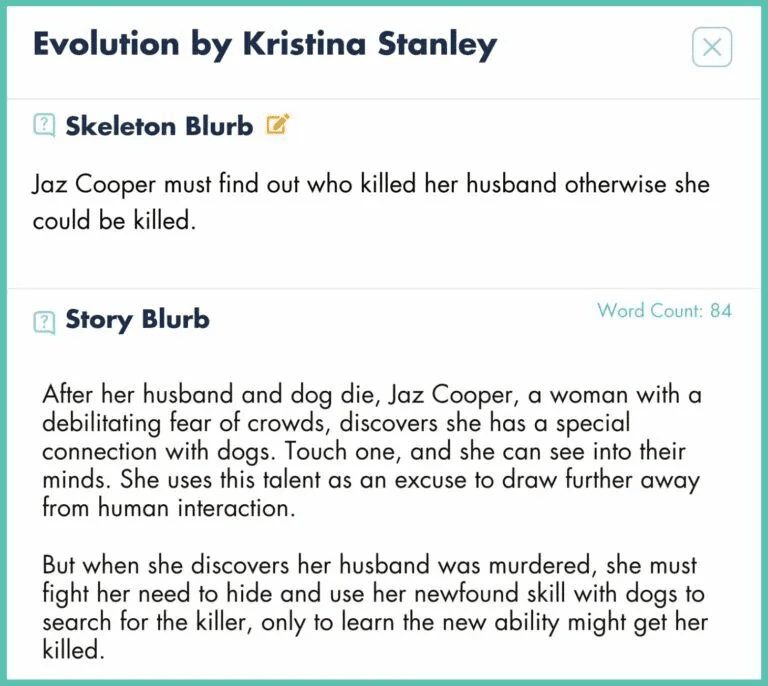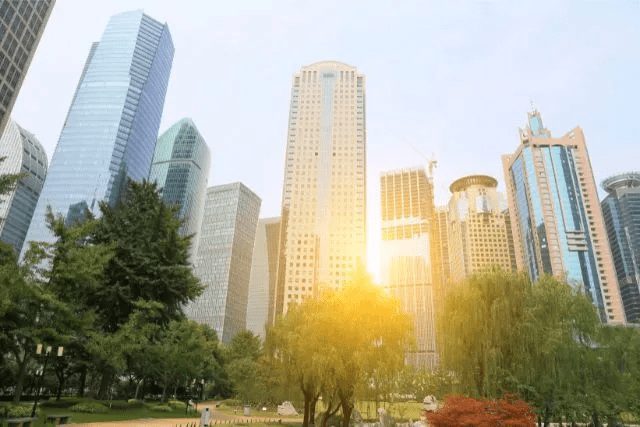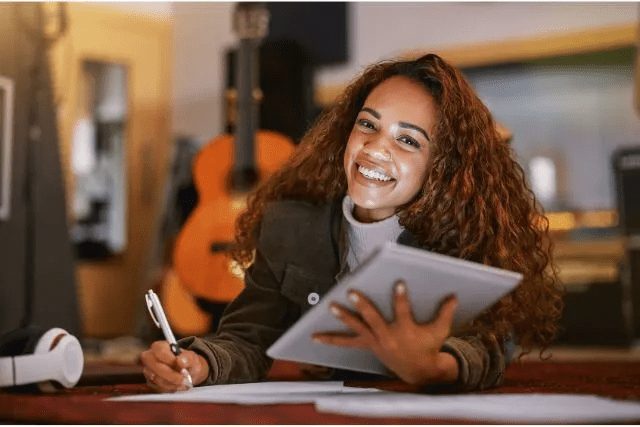Using Fictionary Software to Learn How to Write Story Elements in Writing

Building a great story is like cooking a superb meal.
By combining all the ingredients in harmony, you can provide your readers with a spiritual meal. Even if you have constructed a unique plot, if the characters are thin or their behavior is inconsistent, the reader will be indifferent.
Even if you create the most compelling characters in the world, if the world they live in is vague and tasteless, readers will struggle to sketch it out in their minds.
Kristina Stanley, founder of Fictionary software, has spent a number of years conducting in-depth analyses of popular stories from around the globe, and she's compiled a list illuminating the common elements that keep readers' hands on the page.
What exactly is the story element and how will it help me?
Simply put, a story element is one of the many ingredients that make up your entire story recipe.There are a total of 38 story elements in Fictionary, and we've categorized them into three main groups: character, plot, and setting elements.
Each element of the story allows you to focus on the parts of the story that will better engage your readers and help you make more creative choices. The decisions the writer makes about each scene, story element, and the layout of the scene work together to make the story unique.
The Three Elements of Fictionary: Character, Plot and Setting
Although they sometimes seem separated, the characters, plot and setting are actually interconnected.
Depending on the genre you are creating, one element may be more important. But no matter the genre, no story is complete without these three elements. If you're creating a kinetic energy-filled action thriller, plot may be more important. If you're writing a romance novel, character development may be key. And if you're building a fantasy or science fiction world, setting will be key.
character element Include everything related to the characters and their development in your story, with a particular focus on the protagonist. This involves elements such as the narrative point of view of the character, the character's goals, and what happens when the character's goals fail, which we'll explore shortly.
plot element Covers everything related to the development of your story. This includes elements such as story structure, conflict and tension, introduction and ending suspense.
Environmental elements Contains all the elements related to world building. These cover things like the weather of the sun, the emotional impact of the setting, and the five senses. Remember: even if you're not writing fantasy or science fiction, worldbuilding is just as crucial, and we'll discuss that later.
If you take the time to evaluate each story element in every scene, you will be able to get a map that provides deep insight into your story. It's like standing at 30,000 feet overlooking your work, allowing you to see through how all the elements work together in concert to weave your literary feat.

Character Story Elements Detailed

Creating vivid and believable characters is not an easy task. If not handled correctly, they can look like cardboard cartoon characters standing there. However, once you get it right, readers will take your characters to heart.
Let's begin by looking at three key story elements that are essential to creating lifelike characters: the character in the narrative perspective, the character's goals, and the character's personal stakes.
1. Story perspective characters
When analyzing story elements, ask yourself: do you have a distinct and recognizable perspective character in each scene?
The viewpoint characters are the narrators in that scene. They are the bridge for the reader to feel and experience the story. The reader needs someone to empathize with. If there is a lack of clear point-of-view characters, the reader will feel adrift and rootless, unable to fully immerse themselves in the scene.
You can tell a single-perspective story, or a multi-perspective story.
When writing a single point of view story, the entire story is narrated by only one character. For example, Helen Fielding's work, Brigitte Jones's Diary.Note: Difficulty level - easier, but not easy.
And in a multi-perspective story, the story is told by more than one character. You can use a dual point of view approach that alternates between two characters, as JP Delaney wrote in Before Girls.Note: Difficulty level - intermediate.
You can also have tons of different characters playing perspective roles in different scenes and chapters. That's the way George R.R, Martin writes in Game of Thrones.Note: Difficulty Level - Master Level.
ACTION: In each scene, label your perspective roles (or use the drop-down menu in your Fictionary software). If you can't clearly define the perspective character in each scene, readers won't be able to recognize it. Use this story element to guide the reader's emotions and get them invested in the right character.
Advanced Tip: Avoid Perspective Jumping
Perspective jumping refers to frequent switching between multiple points of view in the same scene. Let's say you're writing a scene from Jane's point of view, and then suddenly you're describing Alisha's thoughts in the same scene. If you write deeper into Jane's point of view, she won't be able to know what's going on in Alisha's mind, and this kind of perspective jumping will make the reader feel disconnected from the plot.
2. Perspective role objectives
When analyzing story elements, ask yourself: does the viewpoint character in each scene have a clear goal?
After identifying the point-of-view character that the reader can become invested in, you need to make sure that in each scene, that character has a goal to pursue. This is where their goals lie, as well as the core focus of this story element.
If you're writing a thriller with a burglary theme, the goal of one scene might be to plan the burglary. The goal of another scene might be to gather the equipment needed for the burglary. Then there's the execution of the theft. If you're writing a romance featuring a single point-of-view character, one goal might be to get through a friend's wedding in one piece, and another might be to confess your heart to the object of your desire.
It is critical that there should be a clear single viewpoint objective in every scene for multiple reasons. If you have:
- There are no perspective goals:Your scene will be missing drive because your viewpoint character is not taking any action.
- Too many viewpoint targets:Your scenes will seem scattered and readers may struggle to understand the true intentions of the viewpoint character.
- Perspective goals are not clear:Similarly, if the point-of-view character's goals are not clear, the reader cannot truly empathize.
ACTION: For each scene, record your point-of-view character objectives (or use the drop-down menu in your Fictionary software). If you can't clearly articulate the goal in each scene, the reader will be much less invested in the story.
3. What happens if the objectives are not met
When dealing with this element of the story, ask yourself: if the protagonist doesn't achieve their goal in this scene, will the reader be able to understand what significant negative consequences this could have?
Once you have identified a clear point-of-view protagonist and a specific goal, you should consider what will happen to the protagonist if he or she fails to achieve the goal.
These are the risks: what will they lose if they fail?
If there's no risk-that is, if the protagonist's failure to achieve their goal doesn't lead to any negative consequences-the reader doesn't care if they fail. Risk inspires suspense (which we'll come back to when we discuss plot structure), and suspense is what drives the story forward.
**Operation: in each scene, jot down the goal of your point-of-view protagonist (or use the handy drop-down menu provided by the Fictionary software to assist). If you can't make it clear what the goal is in each scene, then the reader can't get as deeply involved as you expect them to. **
### These three character elements form the framework summary of your scene
The point-of-view protagonists, their goals, and what the goals will lead to if they are not met are three elements that combine to help you assess whether you have the foundation to build a successful scenario.
Create a frame summary for each scene based on the following structure (that's right! There should be a summary for each scene):
- Viewpoint protagonist (name): _____________
- Must be accomplished (point-of-view goal): _____________
- Otherwise (if target not met/risk): _____________
Once you've identified these three elements, know that you've laid the groundwork for building a great scene.

Structural elements of the story
It's no small feat to create a gripping storyline, but with Fictionary software, this challenge is much easier. Here are three key plot elements that are guaranteed to make readers fall in love.
1. Storyline development curve
Regarding this plot element, you need to ask yourself: does your novel incorporate the five Fictionary storyline development scenes, and do they appear in roughly appropriate chapters?
When Kristina Stanley developed Fictionary software, her goal was to make storytelling simple. One of those goals was to say goodbye to the complicated spreadsheets that were used to track the progress and elements of the stories she was telling.
[Storyline Development Axis (Fictionary Story Arc)] is one of the core ways she accomplishes this.

Christina studied all the popular story structure templates from Save the Cat Writes A Novel to The Hero's Journey. She found that they have five plot points in common.
- [trigger]: An event that disrupts the protagonist's everyday world and introduces conflict in the story. This usually occurs in the first 151 TP3T of your novel's beginning.
- Plot Node 1. A key moment when the protagonist decides to intervene in a story conflict (i.e., set a story goal). This occurs between 20% and 30% of the novel.
- Midfield. An event that changes the protagonist from passive to active action. This occurs between 45% and 55% of the novel.
- Plot Node 2. The key to the events that bring the main characters to their lowest ebb is that they begin to doubt their ability to resolve the story's conflicts. This occurs between 70% and 80% of the novel.
- [culmination]: It is the moment when the main character achieves or fails to achieve the goals of the story. They can win or lose, unite with their loved ones or separate. This generally occurs in novels 85% through 95%.
All plot nodes give a range of progression, for example plot node 1 can occur between 20% and 30%, this is because it is a guided model rather than a stereotypical formula. Some stories may need to introduce events earlier, others may need a later climax.
Following the Fictionary storyline axis ensures that the story you tell has just the right amount of pacing and is engaging.
INTERACTIVE SUGGESTION: When reviewing your novel using Fictionary software, use the Storyline Axis view to check that your storyline matches the Storyline Axis recommended by Fictionary.
Highly effective advice: optimizing your storyline development curve
The blue line represents Fictionary's recommended storyline development axis, which indicates the correct place where the storyline should appear. The yellow line, on the other hand, represents your actual storyline development. As you revise your novel, you can bring your plot development curve ever closer to the recommended development axis.
2. Conflict and suspense
When conceptualizing this story element, ask yourself: is there enough suspense and conflict in my scene?
Suspense and conflict are key to weaving the reader's obsession with the story.
Suspense is the potential threat of something ominous. For example, when your protagonist is walking home late at night. They hear footsteps behind them and are convinced they are being followed. They also believe that whoever is following them could cause harm. This creates suspense because something bad could happen in this situation.
But what constitutes a conflict, you may ask?
Conflict comes after suspense, because bad things really do happen. Imagine your protagonist is attacked by someone who is stalking them and they have to defend themselves. That's conflict because the fight actually happened.
Wait, does that mean suspense and conflict is limited to physical combat?
Of course not.
Let's imagine a more peaceful example.
Suppose there is a pair of lovers in a scene. One of them answers a question with words filled with hints that hold deep meaning. This creates suspense because hints in dialog usually signal that an argument is about to break out. If the partner who is often implicitly blamed begins to fight back, thus creating an argument, then this is a conflict.

Attention: Not every scene needs to set up conflict, but it is recommended to create some suspense in every scene. Suspense can hold the reader's interest and move the story forward.
ACTION GUIDE: On the Fictionary software evaluation page, under the "Plot" tab, mark "Excellent" for those scenes where suspense and conflict are handled well. Next to those scenes that need work in this area, mark "Needs Work" or "None". Once you've done this, you can use the Story Map to keep track of which scenes need more work.
3. Opening and closing quotations
For this story element, ask yourself: have I properly opened and closed each scene in a way that ensures the reader will continue to read on?
I understand your intentions. It's the kind of story you want to create. The kind of story that keeps readers up late at night, even when they should actually be in bed earlier. The kind where you want them to work the next day, tired from needing to finish your book.
Quotes at both the beginning and end of scenes entice the reader to continue reading. You need to embed these quotes at the beginning and end of each scene. Their main function is to make the reader create questions that can only be answered by reading on.
For quotes at the beginning of scenes, you might consider:
- Counterintuitive beginnings (start with a tense part of the story)
- portend impending trouble
- Use of Powerful Dialog
- Leads to a question
- Irrelevant details should not be overdescribed
For end-of-scene quotes, you might consider:
- Creating dramatic suspense
- Revealing the Shocking Truth
- Give the protagonist or antagonist a setback
- Uncovering Secrets
- leave unanswered questions
- Creating Unexpected Plot Twists
If you skillfully set up intriguing quotes at the beginning and end of each scene, your readers will be eager to turn the pages until they finish your book.
ACTION: Double check the beginning and end of each scene. If your quote sections are engaging enough, then check the appropriate section next to the plot tab. If you feel that these sections are not engaging enough and need further refinement, then mark them so that you can come back to them later and revise them to make them more appealing.
We've got the plot elements pretty much done. Next we look at the background setting elements.
Story Setting Elements

The story setting makes up the world of your story. It includes the locations you pick, the important objects you choose to incorporate, and the sensory information you describe. Some authors may view setting as a late addition, but we consider setting to be just as important as character and plot.
Here are three setting elements you should consider when you want to use setting to deepen the emotional impact of your story.
1. Weather conditions
When confronted with this story element, you need to ask yourself: am I using the weather to create tension for the story, to intensify the atmosphere, or to throw obstacles in the way of my characters?
Weather is an often underestimated element of fiction, but it can be excellent for adding tension and driving character development. You can also use it to set up difficult situations for your protagonist and first-person perspective characters.
As an example, a scene in Agatha Raisin and the Vicious Vet depicts Agatha driving on an icy road with the goal of getting home. However the road conditions become too dangerous for her to make it.
In this case, the road became an obstacle to stop Agatha from reaching her goal.
Weather also works well for character deepening.
Imagine a sunny day with two very different characters on such a day. The happy-go-lucky character might revel in the brightness and warmth of the sun. The somber character might be offended by the heat wave and the burning sun.
Action tip: Keep an eye on the weather. You don't need to mention the weather in every scene (and really, you shouldn't), but as you build each scene, you should consider whether it could be used to add more atmosphere or impact. Use the story element 'Weather' in the Fictionary software (under the Settings tab) to mark those parts that may need to be strengthened when you make changes.
2. Emotional impact
In thinking about this element of the story, you need to ask yourself: is my scene set in a location that has a huge emotional impact on the first-person perspective character?
Setting is more than mere background scenery. It offers the possibility of an emotional experience for your first-person perspective character - and the reader.
Imagine a character waiting for a call from a doctor about the results of their fertility test. This scene could be set anywhere. In their home, at their place of work, or walking alone in the woods. But do these locations provide the strongest emotional experience?
What if your protagonist happens to pass by a children's playground full of laughter when she gets a phone call on her way back to work. Regardless of the outcome of the fertility test, the news of this location will add extra emotional depth to the scene.
When choosing the location of your scene, ask yourself, "Does this setting provide the strongest emotional experience, or is there something else that could be done better?"
Suggestion for Action: Review all of your scene locations under the Settings tab on the Fictionary Software Evaluation page to see if they enhance the emotional experience of that scene. If not, mark "Needs Improvement" under the "Emotional Impact" element so you can track where changes need to be made.
3. Perception of the five senses
When telling this element of the story, you have to ask yourself: are you portraying enough sensory details to make the reader feel fully immersed in each scene?
In fiction writing, the five senses of perception are the same as the five senses we humans use to perceive the world every day:
- VISUAL. Used to depict new environments and characters that the character encounters
- Auditory. Used to create an atmosphere
- Sense of smell. For triggering memory flashbacks
- Taste. Can be used in creative ways (e.g., describing emotions through flavor)
- Tactile. Used to describe temperature and feelings
<故事地图中筛选出的五官感知截图>
As authors, we can't afford to be lax in competing for our readers' attention.
It's not just other writers and their work that we face. We also compete with other mediums and streaming services like Netflix and Amazon Prime. These visual media provide a rich sensory experience for readers, and they use vivid visuals and soundtracks to bring readers into the stories they are telling.
We must use the five senses of perception to create the same experience in the reader's imagination.

ACTION ITEM: Use the five sensory story elements of sight, sound, smell, taste, and touch under the Settings tab on the Evaluation page of the 'Fictionary' software to see if the sensory information in your work is good enough. Also, mark which sensory information is lacking in each scene. This will help you keep track of where sensory information is missing through the 'story map'.
Top tip: average the three senses
We recommend that you use at least an average of three senses per scene to bring the setting to life. We often rely too heavily on sight, but remember that the four other senses are just as important.
Conclusion: what are story elements?

Gentlemen, here's what we found.
We talk about nine ways Fictionary Story Elements can help you give your manuscript a more powerful impact and emotional impact. And that's just a few of the many applications. We recommend you start a free trial of [Fictionary StoryTeller software] to explore its features in more depth.
Again, the key points are emphasized:
For the core group of "characters", consider the following:
- From which character's point of view is your story told?
- What are their goals in each scenario
- How to set the relevant stakes
For the core group of "plots", think about the following:
- How to create a more cohesive, better-paced story using the Fictionary storytelling framework
- How to Elevate Conflict and Tension
- How to make opening and closing hooks more compelling
For the core group of "settings", consider:
- How to Use the Weather to Set Up Obstacles
- Which positions will have the greatest emotional impact
- How to use the five senses of perception to create an immersive experience for readers
We have explored only a few of Fictionary's 38 story elements. To learn more about the other elements and how they can help you weave stories that your readers will love try the Fictionary software.
© Copyright notes
Article copyright AI Sharing Circle All, please do not reproduce without permission.
Related articles

No comments...




